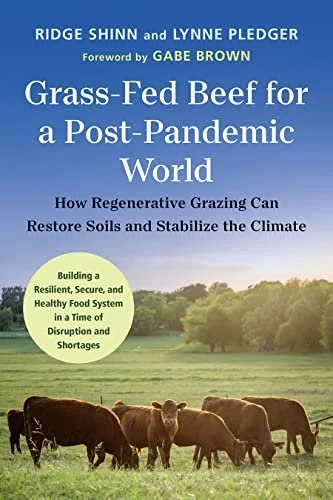It makes a difference what people eat, both for their health and for the environment that sustains them. It also makes a huge difference how the food is grown and raised, both for its quality and its impact on the world.
This book describes how raising cattle on open pastures of grass rather than in feedlots with troughs of grain is helping produce healthier meat, strengthen local communities, restore depleted farmland, and reduce emissions contributing to climate change.
Based on their experience with Big Picture Beef, a company linking farms in the Northeast U.S. to stores, restaurants, and institutions, Ridge Shinn and Lynne Pledger take a deep dive into the connections between the health of soils, plants, and animals and the health of human consumers.
“Because we all eat, we can begin to change the food system by recognizing our power as consumers and spending our food dollars on healthy food. We can ask our local stores to carry 100% grass fed beef produced in the United States instead of looking for the least expensive food to buy. Those who have the means can seek out the high-quality food that our society needs to have available in the future,” they suggest.
“At the same time, we can boycott foods brought to us by multinational corporations that are pillaging our natural resources for their profit. In the long run, the cost of grass-fed beef and other regeneratively produced foods are a bargain for a livable earth and the health of generations to come.”

